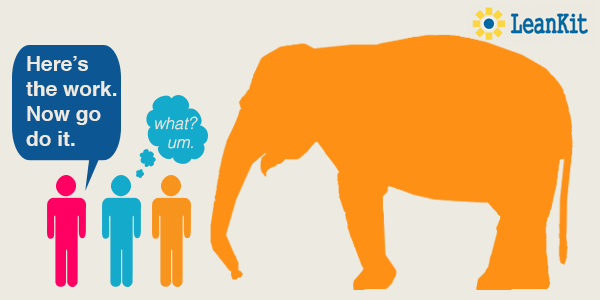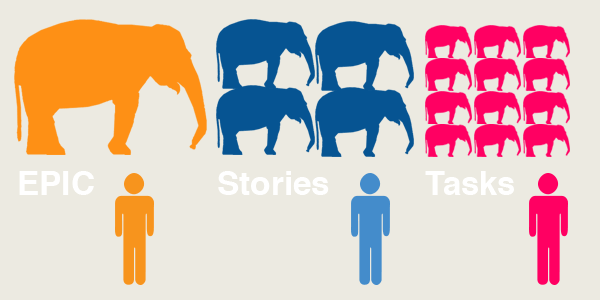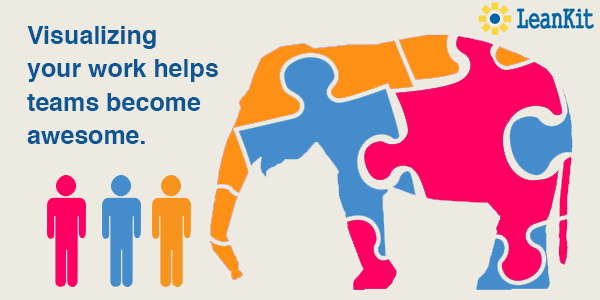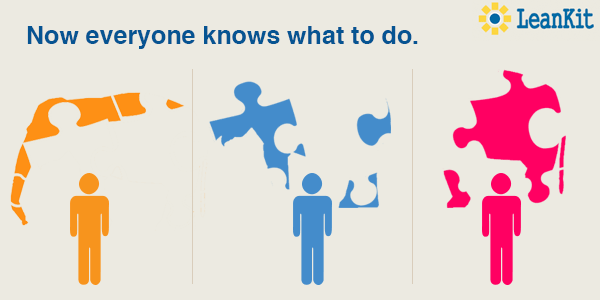
Have you ever looked at a body of work and wondered how you would get it all done?
They say the best way to eat an elephant is to take one bite at a time.*
This analogy does a great job of explaining why it is a good idea to break down your work into manageable (bite-sized) pieces. Without breaking down your work, doing that huge project seems impossible. Let’s take a look at how to break down your work.
Understanding Epics (Projects), Stories and Tasks

Epics – Large projects that entail many people over a long time.
Stories – Smaller projects within an Epic that must be completed before the Epic can be considered ‘Done’.
Tasks – The day-to-day things you must do to complete a Story. Tasks are individual work items that can be done with relatively little effort, like making phone calls, writing an email or having a meeting.
Breaking down work sounds straight-forward, but it can take some practice if you aren’t used to working in this way. For example, if your task is to plan an event, you may just put one item on your to-do list and call it, “Plan event.” But this task is actually a series of tasks (and maybe even a series of mini-projects) that require various people and resources to get done.

To begin breaking down your work, think of it in terms of action steps. If a task has more than one action step, it should probably be further broken down so that those steps can be clearly represented on a task board.
It may sound like a lot of effort just to get all of the work broken down, but reducing large portions of work into smaller portions makes eating the elephant possible.

The breakdown of work also provides a way for even the largest teams to work iteratively (i.e., reduce potentially wasted effort as changes occur to a project) while retaining the ability to scale up or down to accommodate projects of any size.
* No elephants were harmed in the making of this blog.
![A Global Collaborative Work Management Blueprint [Video]](https://blog.planview.com/wp-content/uploads/2019/07/A-Global-Collaborative-Work-management-blueprint.png)



